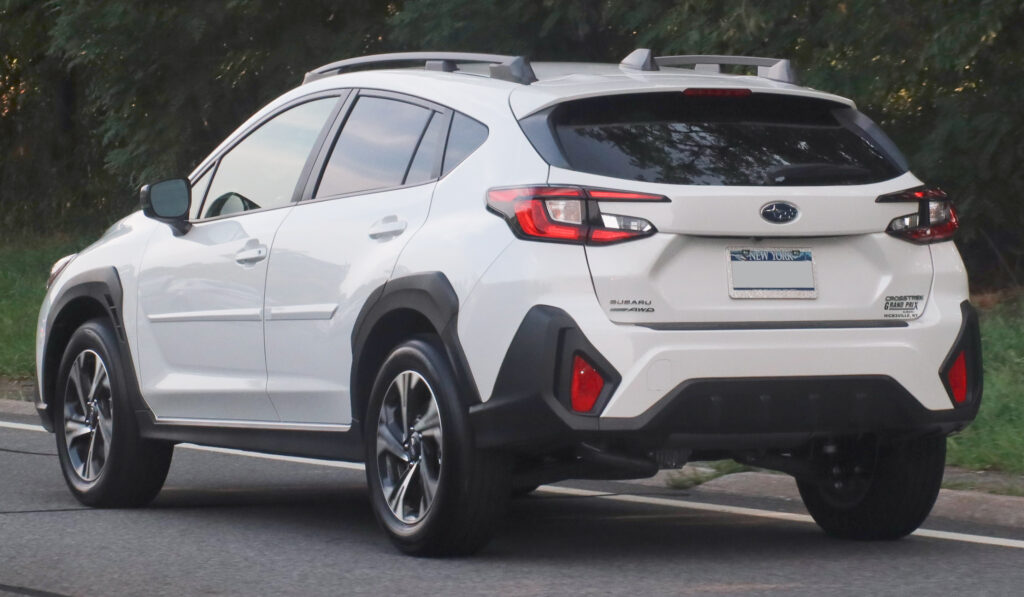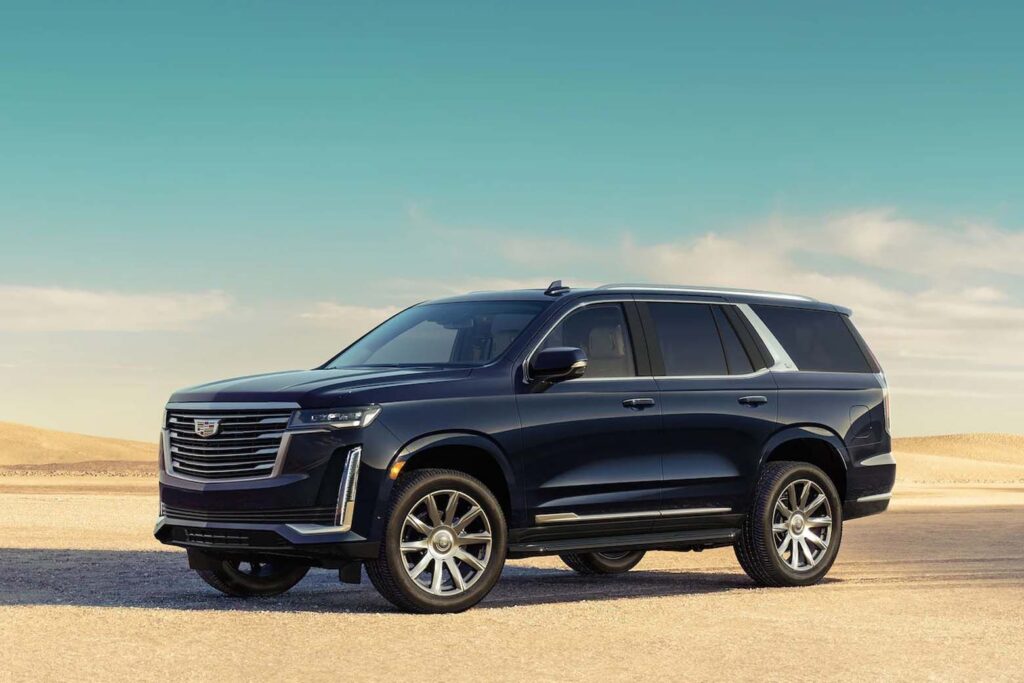
In an era saturated with curated online personas and the relentless pursuit of status, the cars we drive often become immediate, albeit sometimes misleading, indicators of our financial standing. The popular imagination frequently conjures images of ultra-luxury vehicles roaring down boulevards as the definitive markers of wealth. Yet, a deeper look into the driving habits of truly affluent individuals and the clever strategies of those who project success reveals a far more nuanced, and often surprising, automotive landscape.
Indeed, the concept of what makes one ‘look rich’ or truly *be* rich when it comes to vehicle ownership is undergoing a significant re-evaluation. Personal finance experts like Dave Ramsey challenge the notion of cars as primary status symbols for the truly wealthy, suggesting that many high-net-worth individuals prioritize frugality. Meanwhile, a distinct class of vehicles exists that, through clever design or cultural association, offers an undeniable aura of prestige without demanding a millionaire’s budget. This article delves into both sides of this fascinating coin, identifying cars that either embody the discreet wealth of actual high earners or master the art of making a powerful, luxurious statement on a more accessible budget.
We’re peeling back the layers on automotive assumptions, examining the vehicles that genuinely wealthy individuals favor and those that, by design or reputation, command respect and project an image of affluence. From the understated reliability chosen by millionaires to the “stealth wealth” chariots of old money, and even to the attainable luxury sedans that punch far above their weight class, these 12 vehicles offer compelling insights into how perception, value, and financial wisdom intersect on the open road. Prepare to have your assumptions about wealth and wheels thoroughly challenged, as we explore what it truly means to drive like a high-earner—or at least look the part.
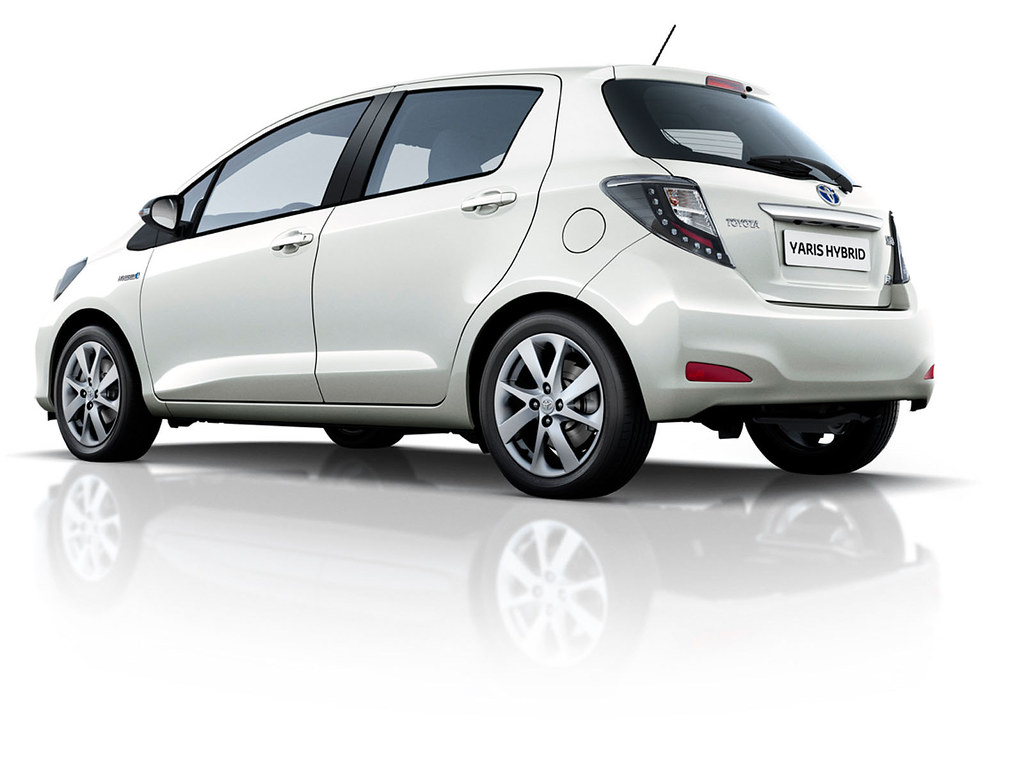
1. **Toyota: The Millionaire’s Unsung Hero**When we think of cars driven by the affluent, images of exotic sports cars or sprawling luxury SUVs often come to mind. However, financial guru Dave Ramsey’s insights, corroborated by an Experian Automotive study, paint a very different picture. A staggering “61% of households making more than $250,000 don’t drive luxury brands.” Instead, they opt for less ostentatious vehicles, with Toyota frequently topping the list.
This choice is not arbitrary; it’s a testament to the brand’s reputation for reliability, value, and understated quality. Toyota vehicles, known for their longevity and low maintenance costs, align perfectly with the frugal mindset that Ramsey attributes to many millionaires. “When people don’t waste money trying to look wealthy, they have money to actually become wealthy,” Ramsey notes, encapsulating the ethos behind choosing a Toyota.
The average price for a Toyota, which stood at $38,198 in the automaker’s second quarter of its 2024 fiscal year, according to CarsDirect citing Cox Automotive data, represents a significant investment but one that offers long-term returns through durability and retained value. Millionaires, it seems, are adept at recognizing true value beyond superficial status. Their choice of Toyota is a practical one, prioritizing financial independence over fleeting external validation.
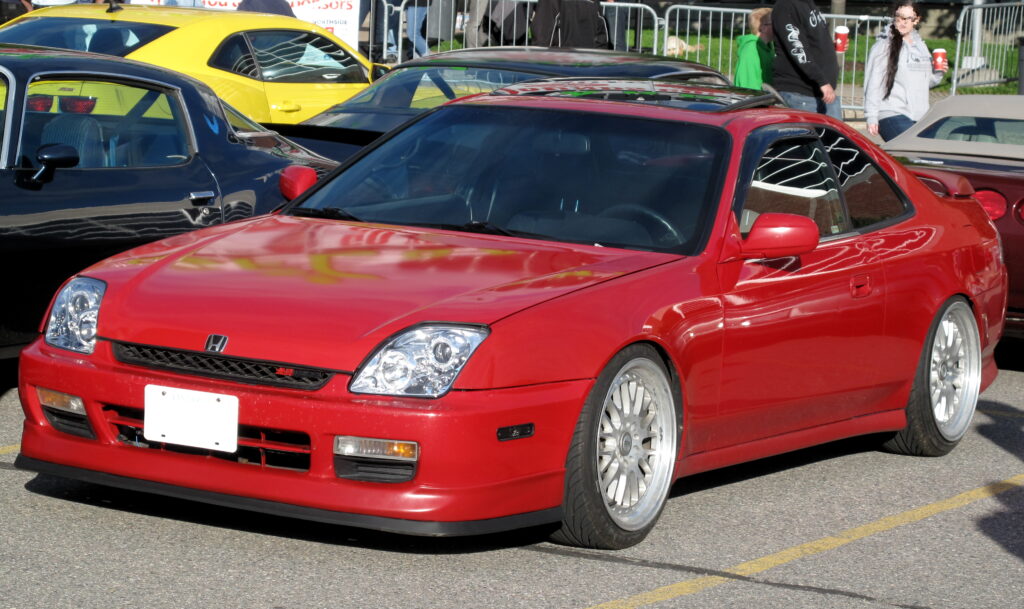
2. **Honda: Reliability as a Pillar of Wealth Accumulation**Similar to Toyota, Honda stands out as another top brand favored by millionaires, reinforcing the idea that genuine wealth is often built on foundations of practicality and smart financial decisions. Honda’s consistent presence on lists of reliable and sensible vehicles makes it a natural fit for individuals focused on accumulating wealth rather than conspicuous consumption. The brand embodies the principle that a car is a tool for transportation, not primarily a display of net worth.
The affordability of many Honda models further underscores this point. For instance, the Civic Sport sedan, one of the least expensive Honda cars, starts just under $26,000, according to Motor Trend. This accessible price point, combined with Honda’s renowned engineering, provides a vehicle that performs admirably and minimizes ongoing expenses, freeing up capital for investments.
This aligns with the wisdom from *The Millionaire Next Door*, which emphasizes frugality as a key to financial independence. Millionaires who drive Hondas exemplify this, understanding that diverting funds from excessive car payments or depreciation into investments can lead to substantial long-term gains. Their choice reflects a belief in financial acumen over automotive flash, demonstrating that you aren’t what you drive.
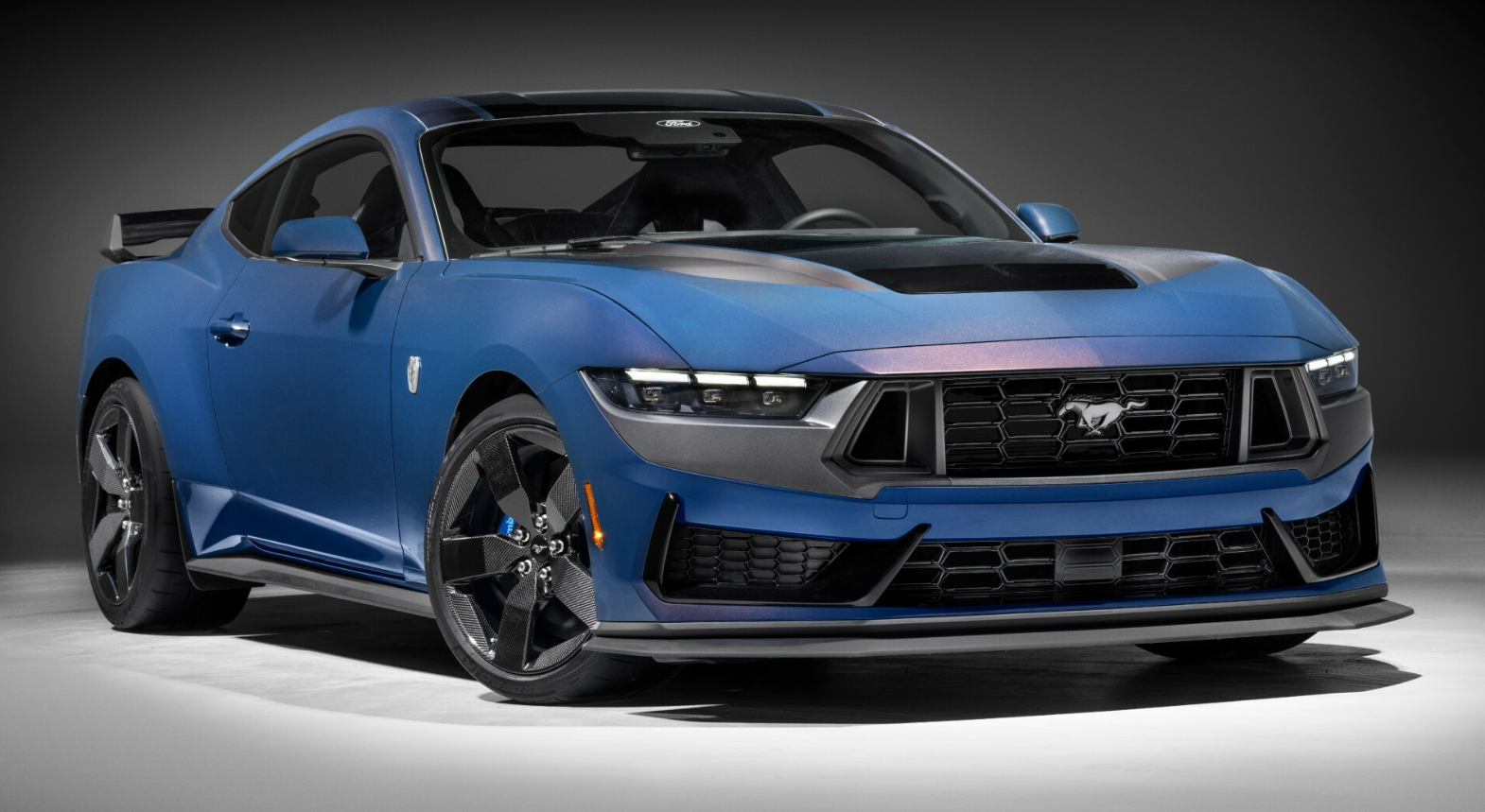
3. **Ford: American Ingenuity and Practical Affluence**Ford, a quintessential American brand, also makes its mark among the top car brands driven by millionaires. This inclusion speaks to the diverse needs and preferences of the wealthy, acknowledging that utility and ruggedness can be just as important as luxury in their daily lives. The presence of vehicles like the F-150 pickup truck, with a 2024 XL model starting at $36,570, highlights this practicality.
For many wealthy individuals, especially those who may own businesses, properties, or engage in hobbies requiring significant hauling capacity, a reliable and robust truck like the Ford F-150 is a functional necessity, not a status symbol. This choice reflects a mindset focused on utility and enduring performance, rather than pure aesthetic luxury or a desire to “flex.”
Millionaires, as the context reveals, are not always defined by lavish spending. They are often defined by their pragmatic choices and their ability to make their money work for them. A Ford, whether a truck or a sedan, represents a sensible, durable investment that supports their lifestyle and business needs without unnecessary extravagance, further dispelling the myth that all wealthy individuals drive only high-end imported luxury vehicles.
Car Model Information: 2024 Ford F-150 XLT
Name: Ford F-Series
Caption: 2022 Ford F-150 Lariat Luxury
Manufacturer: Ford Motor Company
Aka: Ford Lobo (Mexico, 1992–present)
Production: 1948–present
Class: Pickup truck#Full-size pickup truck
Layout: Front-engine, rear-wheel-drive layout,rear-wheel drive
Predecessor: 1941 Ford
Categories: All-wheel-drive vehicles, All Wikipedia articles written in American English, All articles that may contain original research, All articles with unsourced statements, Articles that may contain original research from September 2020
Summary: The Ford F-Series is a series of light-duty trucks marketed and manufactured by the Ford Motor Company since model year 1948 as a range of full-sized pickup trucks — positioned between Ford’s Ranger and Super Duty pickup trucks. Alongside the F-150 (introduced in 1975), the F-Series also includes the Super Duty series (introduced in 1999), which includes the heavier-duty F-250 through F-450 pickups, F-450/F-550 chassis cabs, and F-600/F-650/F-750 Class 6–8 commercial trucks.
Get more information about: Ford F-Series
Buying a high-performing used car >>>
Brand: Ford Model: F-150
Price: $40,397 Mileage: 45,515 mi.

4. **Lexus: Blending Millionaire Preference with Attainable Luxury**Lexus occupies a fascinating position in the automotive landscape of the affluent. It appears on Dave Ramsey’s list of top brands driven by millionaires, yet also features prominently as a car that can “fool everyone” into thinking you’ve joined the country club without the European maintenance headaches. This duality makes Lexus a prime example of accessible luxury that appeals to a wide spectrum of high-net-worth individuals.
The 2024 Lexus ES, for instance, starts at $43,190 and can go up to $53,480 depending on trim and options, according to Car and Driver. While not inexpensive, these prices are often considerably lower than those of German luxury competitors. The ES300, specifically, is highlighted as “Lexus’s masterclass in badge engineering: take a Camry, add some leather, throw in a V6, and suddenly you’ve got a ‘luxury’ car that nobody questioned.”
The genius of Lexus lies in its ability to offer a sophisticated, comfortable, and reliable driving experience with “real wood trim, leather seats that didn’t crack after one summer, and a ride quality that made passengers think you’d splurged on something fancy.” This combines the millionaire’s desire for reliability (Toyota-grade) with the aspiration for luxury, making it a smart choice for those who want prestige without the financial pitfalls often associated with other premium brands. It offers 90% of the luxury experience for 60% of the price.
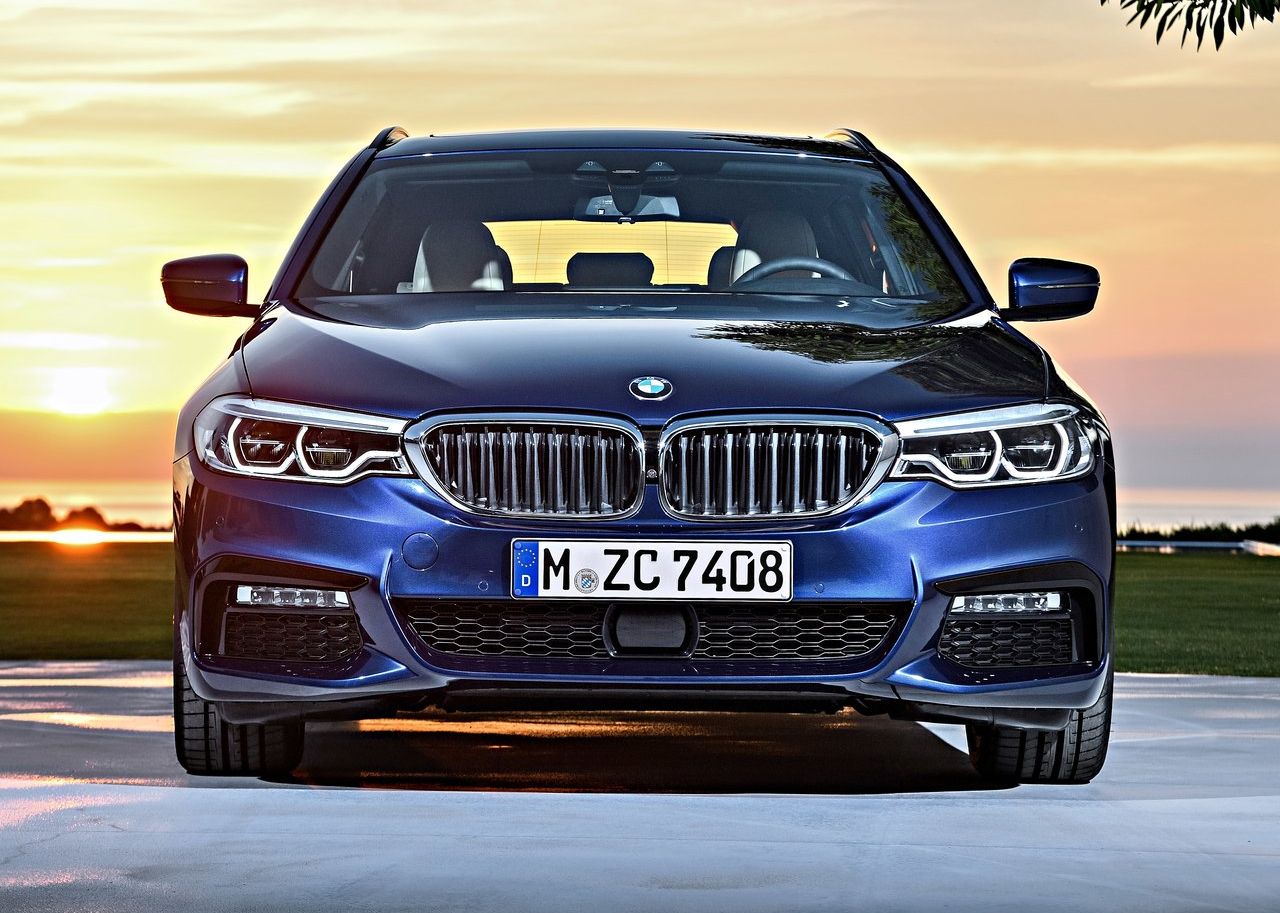
5. **BMW: Where Performance Meets Millionaire Pragmatism and Stealth**BMW appears on the list of top 10 brands driven by millionaires, demonstrating that even traditional luxury marques can fit within a wealthy individual’s pragmatic choices. However, the context also introduces BMW through the lens of “stealth wealth” with the F10 generation 5 Series. This distinction is crucial for understanding how certain luxury brands are chosen.
While a brand new BMW 3 Series, starting at $44,500, might be considered a standard luxury purchase, wealthy individuals often seek value and understated elegance. The F10 5 Series (2011–2015) is described as a “refined executive sedan, understated yet premium,” which can be acquired for a fraction of its original MSRP, ranging from “$6,000 to $11,000.”
This specific model is called a classic “respectable rich guy” daily driver, embodying the ‘old money’ sensibility of choosing a car that has a “very kind of understated, like I’m a respectable businessman kind of style to it.” It projects an image of established success without the flashy new-money stigma. While reliability is noted as a potential issue for older models in this category, the initial purchase price and projected image align with a savvy, less ostentatious approach to luxury.
Car Model Information: 2023 Toyota Camry LE
Name: BMW 5 Series
Manufacturer: BMW
Production: 1972–present
Class: Executive car
BodyStyle: Sedan (automobile)
Layout: Front-engine, rear-wheel-drive,Front-engine, all-wheel-drive
Predecessor: BMW New Class
Categories: 1980s cars, 1990s cars, 2000s cars, 2010s cars, 2020s cars
Summary: The BMW 5 Series is an executive car manufactured and marketed by BMW since 1972. It is the successor to the BMW New Class sedans and is currently in its eighth generation. The car is sold as either a sedan or, since 1991, a station wagon (marketed as “Touring”). A 5-door fastback (marketed as “Gran Turismo”) was sold between 2009 and 2017. Each successive generation has been given an internal G-code designation since 2017. Previously, a F-code designation was used between 2010 and 2016, while an E-code designation was used between 1972 and 2010. These are used to distinguish each model and generation from each other.
The first generation of the 5 Series was powered by naturally aspirated four-cylinder and six-cylinder petrol engines. Following generations have been powered by four-cylinder, six-cylinder, V8 and V10 engines that are either naturally aspirated or turbocharged. Since 1982, diesel engines have been included in the 5 Series range.
The 5 Series is BMW’s second-best-selling model after the 3 Series. On 29 January 2008, the 5 millionth 5 Series was manufactured, a 530d sedan in Carbon Black Metallic. It is BMW’s oldest nameplate still in production and the first model line to use “Series” in the name, debuting the three-digit model naming convention still used today. Since the E28, all generations of 5 Series have included an “M” model, called the BMW M5.
Get more information about: BMW 5 Series
Buying a high-performing used car >>>
Brand: BMW Model: 5 Series
Price: $25,600 Mileage: 23,699 mi.

6. **Volvo V70 Station Wagon (P2 Generation, 2000–2007): The Quintessential Old Money Wagon**For those who understand the subtle signals of “stealth wealth,” the Volvo V70 station wagon, specifically the P2 generation (2000–2007), is an icon. Doug DeMuro, a renowned car reviewer, highlights it as the “ultimate ‘old money’ wagon,” a vehicle that is practical yet upscale and blends seamlessly with high net-worth crowds. Volvo’s long-standing reputation as an “engineering-forward safety-minded luxury car for the folksy rich crowd” underpins its appeal.
These wagons, often equipped with durable five-cylinder engines, are prized for their longevity and understated presence. DeMuro observes, “Folks, you can buy a used Volvo V70 station wagon for like six grand. And if you take that into some wealthy area, people will just think that you’re one of those old money rich people who drives a car into the ground because I know the value of a dollar.” This perfectly encapsulates the ‘stealth wealth’ philosophy, where value and endurance trump fleeting trends.
The V70 avoids the “new money stigma” of more showy cars. As DeMuro states, “these are perfect for this category exactly because they’re not cars that anybody has ever used to flex.” It’s a choice that communicates a deep understanding of value, a preference for timeless utility, and a quiet confidence that needs no external validation—a true hallmark of established wealth.

7. **Mercedes-Benz E-Class Wagon (W211/W212, mid-2000s to mid-2010s)**Moving beyond the immediate choices of millionaires, we delve into vehicles that master the art of projecting ‘old money’ vibes. The Mercedes-Benz E-Class wagon, particularly models from the mid-2000s to mid-2010s (W211/W212 generations), exemplifies this perfectly. It’s a luxury wagon that subtly signals quiet wealth, often favored by affluent families who genuinely prioritize function and space over pure ostentation.
These wagons are typically powered by a dependable 3.5-liter V6 engine, often paired with 4MATIC all-wheel drive, reinforcing their reputation for lasting luxury and robust capability. Car reviewer Doug DeMuro highlights their remarkable value, noting that these older models can be acquired for ““$7,000 to $12,000 cars. They are not expensive, and yet they project this air of sort of old money, my daughter rides horses kind of wealth.”
This perception stems from the E-Class wagon’s timeless design and Mercedes-Benz’s enduring brand prestige. It’s a vehicle that suggests its owner values quality, practicality, and a heritage of engineering excellence, rather than simply chasing the latest model. Such a choice communicates a confident, established financial standing that doesn’t need to flaunt its status, making it a compelling option for those aiming for understated elegance.
Car Model Information: 2023 Toyota Camry LE
Name: Mercedes-Benz E-Class
Manufacturer: ubl
Production: E-Class nomenclature adopted in August 1993,(Predecessors traced to 1946)
Class: Executive car
Layout: Front-engine, rear-wheel-drive
Predecessor: Mercedes-Benz W124
Categories: 1960s cars, 1970s cars, 1980s cars, 1990s cars, 2000s cars
Summary: The Mercedes-Benz E-Class is a range of executive cars manufactured by German automaker Mercedes-Benz in various engine and body configurations. The E-Class falls as a midrange in the Mercedes line-up, and has been marketed worldwide across five generations.
Before 1993, the E suffix in Mercedes-Benz model names referred to Einspritzmotor (German for fuel injection engine) when in the early 1970s fuel injection began to proliferate beyond its upper-tier luxury and sporting models. By the launch of the facelifted W124 in 1993 fuel injection was ubiquitous in Mercedes engines, and the E was adopted as a prefix (i.e., E 220). The model line is referred to officially as the E-Class (or E-Klasse). All generations of the E-Class have offered either rear-wheel drive or Mercedes’ 4Matic four-wheel drive system.
The E-Class is Mercedes-Benz’ best-selling model, with more than 13 million sold by 2015. The first E-Class series was originally available as four-door sedan, five-door station wagon, two-door coupe and two-door convertible. From 1997 to 2009, the equivalent coupe and convertible were sold under the Mercedes-Benz CLK-Class nameplate; which was based on the mechanical underpinnings of the smaller C-Class while borrowing the styling and some powertrains from the E-Class, a trend continued with the C207 E-Class coupe/convertible which was sold parallel to the W212 E-Class sedan/wagon. With the latest incarnation of the E-Class released for the 2017 model year, all body styles share the same W213 platform.
Due to the E-Class’s size and durability, it has filled many market segments, from personal cars to frequently serving as taxis in European countries, as well special-purpose vehicles (e.g., police or ambulance modifications) from the factory. In November 2020, the W213 E-Class was awarded the 2021 Motor Trend Car of the Year award, a first for Mercedes-Benz.
Get more information about: Mercedes-Benz E-Class
Buying a high-performing used car >>>
Brand: Mercedes-Benz Model: E-Class Wagon
Price: $25,600 Mileage: 23,699 mi.
8. **Audi A8 (D3 generation, 2003–2010)**For those who appreciate sophistication without the overt flash, the Audi A8 from its D3 generation (2003–2010) stands out as a connoisseur’s choice in the realm of stealth wealth. Its design, even years after its release, remains modern and sleek, making it an attractive sedan that subtly conveys high-end taste. Many of these models boast a dependable 4.2-liter V8 engine and Audi’s renowned quattro all-wheel-drive system, blending performance with all-weather capability.
What makes the D3 A8 particularly intriguing for our discussion is its current market accessibility. DeMuro points out that ““A D3, early D3 A8 is a $9,000 to $14,000 car. They are shockingly cheap to buy, shockingly cheap.” This makes it an incredibly appealing option for individuals looking to project an image of wealth and refined taste without the prohibitive initial investment.
DeMuro aptly describes the Audi A8 as “the thinking man’s stealth wealth sedan,” elaborating, ““The A8 has always kind of been the connoisseur’s choice. It’s like the guy who buys it isn’t just some rich guy who doesn’t know any better. It’s like the architect or the thinking man chose the A8.” While it might land in an “awkward middle ground between performance and comfort,” not being as “soft and wafty” as some rivals, its intellectual appeal and understated elegance are undeniable, allowing drivers to project a sophisticated image on a practical budget.
Car Model Information: 2019 Audi A8 L 55
Name: Audi A8
Manufacturer: Audi AG
Assembly: Neckarsulm
Production: #D2
Class: Full-size,luxury car
BodyStyle: sedan (automobile)
Platform: List of Volkswagen Group platforms
Layout: FF layout
Related: Audi S8
Predecessor: Audi V8
Categories: 2000s cars, 2010s cars, 2020s cars, All-wheel-drive vehicles, All articles lacking reliable references
Summary: The Audi A8 is a full-size luxury sedan manufactured and marketed by the German automaker Audi since 1994. Succeeding the Audi V8, and now in its fourth generation, the A8 has been offered with either front- or permanent all-wheel drive and in short- and long-wheelbase variants. The first two generations employed the Volkswagen Group D platform, with the current generation deriving from the MLB platform. After the original model’s 1994 release, Audi released the second generation in late 2002, the third in late 2009, and the fourth and current iteration in 2017. Noted as the first mass-market car with an aluminium chassis, all A8 models have used this construction method co-developed with Alcoa and marketed as the Audi Space Frame.
A mechanically upgraded, high-performance version of the A8 debuted in 1996 as the Audi S8. Produced exclusively at Audi’s Neckarsulm plant, the S8 is fitted standard with Audi’s quattro all-wheel drive system. The S8 was only offered with a short-wheelbase for the first three generations, being joined by a long-wheelbase variant for the fourth generation.
Get more information about: Audi A8
Buying a high-performing used car >>>
Brand: Audi Model: A8
Price: $28,330 Mileage: 60,140 mi.
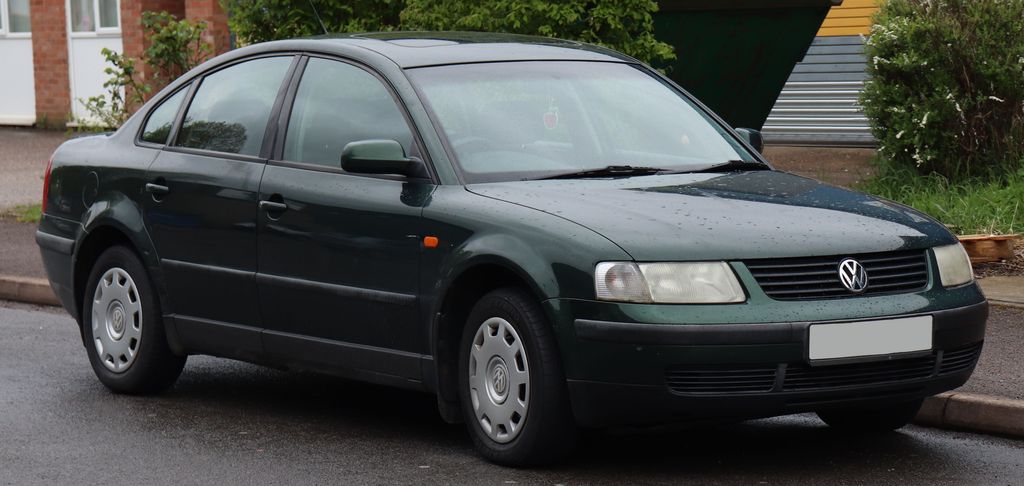
9. **Volkswagen Passat CC: The German Imposter That Almost Got Away With It**Shifting our focus to cars that master the art of ‘perceived luxury’ without the hefty price tag, the Volkswagen Passat CC is a prime example of German engineering cleverly disguised. Introduced as Volkswagen’s daring attempt to mimic the sleek lines of an Audi A5 Sportback, the CC remarkably succeeded in creating an illusion of premium status at a more accessible price point. This vehicle truly made people do a double-take, questioning if VW had inadvertently ventured into selling luxury cars for significantly less.
The numbers behind the CC were quite compelling for its segment. Its base price hovered around “$28,000 new,” a stark contrast to the “$45,000+” of similar German luxury competitors. Drivers could choose between a potent 2.0T four-cylinder engine, delivering 200 horsepower, or an even more robust VR6 engine with 280 horsepower. This allowed for respectable performance, with the turbo four achieving 0-60 mph in just 6.5 seconds, all while offering a reasonable “13.2 cubic feet” of cargo space for a “coupe-like” sedan.
One of the CC’s most charming features, often associated with higher-end vehicles, was its frameless windows, which added a touch of elegance and sophistication. The interior further enhanced this perception, boasting “real leather,” ambient lighting, and a dashboard design that exuded a level of refinement far beyond its price class. It felt genuinely upscale, creating an immediate impression of luxury for both driver and passengers.
While the Passat CC shared Volkswagen’s reputation for reliability, sometimes leading owners to “get to know your mechanic personally,” its undeniable style and comfortable ride offered an unparalleled sense of European luxury. Based on the standard Passat platform, VW’s design genius reshaped the roof and smoothed the lines, making it appear twice as expensive. It truly was an automotive sleight of hand, delivering that coveted luxury feel without demanding a millionaire’s budget.
Car Model Information: 2023 Toyota Camry LE
Name: Volkswagen CC
Aka: Volkswagen Passat CC
Manufacturer: Volkswagen
Production: 2008–2016,2010–2018 (China)
Assembly: Emden,Changchun,Kaluga
Successor: Volkswagen Arteon
Class: Compact executive car
BodyStyle: Sedan (automobile)
Layout: Front-engine, front-wheel-drive layout
Platform: Volkswagen Group A platform#PQ46 platform cars
Engine: Turbo fuel stratified injection,Inline-four engine
Transmission: Manual transmission
Wheelbase: 106.7 in
Abbr: on
Length: 188.9 in
Width: 73.1 in
Height: 56.0 in
Related: Volkswagen Passat,Volkswagen Sharan,SEAT Alhambra,Škoda Superb
Designer: Oliver Stefan
Sp: us
ModelYears: 2009–2017
Categories: 2010s cars, All-wheel-drive vehicles, All articles with unsourced statements, Articles with short description, Articles with unsourced statements from March 2023
Summary: The Volkswagen CC, initially sold as the Volkswagen Passat CC, is a car built by German marque Volkswagen from 2008 to 2016. It is a variant of the Volkswagen Passat that trades headroom and cargo space for a coupé-like profile and sweeping roofline. The CC debuted in January 2008, at the North American International Auto Show in Detroit and was discontinued after the 2017 model year.
Volkswagen said the name CC stands for Comfort Coupe, recognizing its combination of a coupe-like profile with four rather than two doors. While based on the Passat, and sharing its wheelbase, the CC is 27 mm (1.06 inches) longer, 50 mm (1.97 inches) lower, and 36 mm (1.42 inches) wider than the Passat.
While the CC has been replaced by the Arteon in most markets, the latter vehicle retains the CC nameplate in China.
Get more information about: Volkswagen CC
Buying a high-performing used car >>>
Brand: Volkswagen Model: Passat CC
Price: $25,600 Mileage: 23,699 mi.
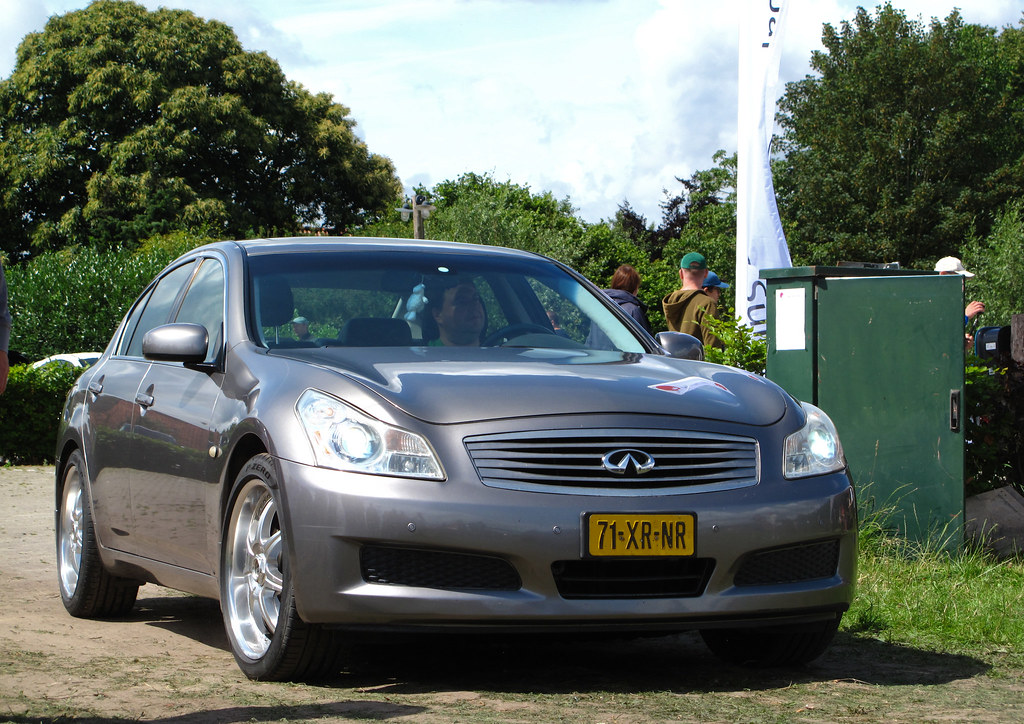
10. **Infiniti G35: The BMW 3-Series Fighter That Actually Won Some Rounds**When Infiniti introduced the G35, it wasn’t just another contender; it was a bold declaration of war against the established dominance of the BMW 3-Series. For the first time in a long while, a non-German sedan possessed the legitimate credentials to challenge, and in many aspects, outperform its European rivals. *Motor Trend* notably recognized its prowess, calling it “a benchmark among near-luxury sport sedans” after it triumphed over competitors like the Cadillac CTS, Acura TL, and Saab 9-3, a clear signal that BMW indeed had reason to be concerned.
The G35’s impressive specifications cemented its status as a serious performance machine. It was powered by a formidable “260-horsepower 3.5-liter V6 engine,” an engine so revered it was also famously found in the Nissan 350Z. Enthusiasts rejoiced at the availability of a “6-speed manual transmission,” a testament to Infiniti’s commitment to driver engagement. With a 0-60 mph time of “5.9 seconds,” it was often quicker than many contemporary BMWs, all starting at an accessible price point “around $27,000 new.” Its innovative front mid-ship platform, with the engine strategically mounted behind the front axle, provided exceptional balance and handling dynamics.
The true genius of the G35 lay in its VQ35DE engine, which seamlessly transitioned from a pure sports car application to a sophisticated business sedan. This was no ordinary economy motor attempting to mimic sportiness; it was an authentic sports car engine meticulously integrated into a four-door package. The result was a sedan capable of outperforming dedicated sports cars at a traffic light, yet equally adept at comfortably accommodating golf clubs or carrying family members, showcasing its versatile luxury.
Inside, the G35 struck an exemplary balance between athletic appeal and refined elegance. The design eschewed ostentatious fake wood or overly plush seating, opting instead for clean, purposeful lines, supportive seats, and intuitive controls designed for the discerning driver. It conveyed an impression of genuine expense and quality without resorting to superficial attempts to impress, speaking to a confident and understated sense of style.
Crucially, Infiniti G35 owners benefited from significantly lower maintenance costs compared to their counterparts driving Audis or BMWs of the same era. This meant enjoying exhilarating performance without the constant worry of exorbitant service bills. While German luxury brands often charged hundreds for routine oil changes, Infiniti drivers experienced reasonable service costs, allowing them to truly enjoy their cars on the road instead of merely admiring them in the garage. The G35 definitively proved that a blend of luxury and performance didn’t require a European pedigree or a substantial trust fund, solidifying its position as a car that inspired confidence in its owners and instilled a healthy dose of concern in its rivals.
Car Model Information: 2006 INFINITI G35 Base
Name: Infiniti G
Caption: 2012 Infiniti G37 (V36, Germany)
Manufacturer: Nissan
Aka: Nissan Primera
Production: 1990–1996,1998–2016
Class: Compact executive car
Layout: Front-engine, front-wheel-drive
Successor: Infiniti Q50
Categories: 2010s cars, All-wheel-drive vehicles, Articles with short description, CS1 errors: bare URL, CS1 errors: missing title
Summary: The Infiniti G Line is a series of compact executive cars manufactured and marketed by Infiniti, a luxury division of Nissan, for the 1991–1996 and 1999–2016 model years — across four generations.
The first two generations of the Infiniti G (P10 and P11) were sedans based on the Nissan Primera. Beginning with its third generation (V35), the Infiniti G have been rebadged versions of the Nissan Skyline line of sedans and coupes that were exported to the United States and Canada. The fourth generation (V36) introduced the hardtop coupe convertible. The Nissan FM platform, used with the third and fourth generations (V35 and V36) of the Infiniti G, also underpins the Nissan 370Z and has shared components with the Infiniti M, Infiniti EX, and Infiniti FX.
Infiniti established a new naming convention beginning with the 2014 model year; all passenger cars are designated by the letter “Q,” while sport-utility model names begin with “QX.” The Infiniti G was to have been replaced by the Infiniti Q50, but the G37 was revived as the Q40 beginning with the 2015 model year.
Get more information about: Infiniti G Line
Buying a high-performing used car >>>
Brand: Infiniti Model: G35
Price: $7,499 Mileage: 62,000 mi.

11. **Ford Thunderbird: America’s On-Again, Off-Again Love Affair**The Ford Thunderbird is a fascinating anomaly in automotive history, a car that has seemingly lived more lives than a particularly resilient cat with a premium health plan. Throughout its many iterations, from a sleek two-seater to a substantial luxury cruiser and later a celebrated retro-inspired darling, the Thunderbird consistently reinvented itself. Yet, through all these transformations, it never lost its unique ability to make its driver feel exceptionally special, embodying a distinctly American take on personal luxury and prestige.
The early “Golden Era” Thunderbirds, spanning from 1955 to 1957, were pure automotive poetry. These iconic models were powered by a range of V8 engine options, offering outputs from “193 to 312 hp,” delivering impressive acceleration for their time, with 0-60 mph achieved in “around 7 seconds.” Priced at “$2,944 in 1955” (approximately $33,000 in today’s money), these were not mere muscle cars but rather personal luxury vehicles, a category they essentially pioneered. The Thunderbird wasn’t about raw speed like a Corvette; it was about making a stylish and grand entrance.
Even after a period where some Thunderbirds became “bloated and lost their way” (a nod to the substantial “land yachts” of the 1970s), the model always retained a certain undeniable presence. There’s a particular gravitas to a car that commands respect simply by virtue of its existence and heritage, even if it might have required some maneuvering assistance for parallel parking. Its long and storied history contributes to an aura of established, enduring prestige.
Ford’s retro revival of the Thunderbird in 2002 attempted to recapture this magic, and visually, it was a triumph. The 11th-generation T-Bird evoked powerful nostalgia and reminded enthusiasts why they initially fell for the original design. Despite its contemporary price tag of “$40,000” and limited trunk space, it successfully projected an image of timeless elegance and classic American luxury, allowing drivers to experience that special feeling of owning a legend reborn.
Car Model Information: 1956 Ford Thunderbird Base
Name: Ford Thunderbird
Caption: 1957 Thunderbird
Manufacturer: Ford Motor Company
Production: unbulleted list
ModelYears: unbulleted list
Class: unbulleted list
Layout: Front-engine, rear-wheel drive layout
Categories: 1960s cars, 1970s cars, 1980s cars, 1990s cars, 2000s cars
Summary: The Ford Thunderbird is a personal luxury car manufactured and marketed by Ford Motor Company for model years 1955 to 2005, with a hiatus from 1998 to 2001.
Ultimately gaining a broadly used colloquial nickname, the T-Bird, the model was introduced as a two-seat convertible, subsequently offered variously in a host of body styles including as a four-seat hardtop coupe, four-seat convertible, five-seat convertible and hardtop, four-door pillared hardtop sedan, six-passenger hardtop coupe, and five-passenger pillared coupe, before returning in its final generation, again as a two-seat convertible.
At its inception, Ford targeted the two-seat Thunderbird as an upscale model. The 1958 model year design introduced a rear seat and arguably marked the expansion of a market segment that came to be known as personal luxury cars, positioned to emphasize comfort and convenience over handling and high-speed performance.
Get more information about: Ford Thunderbird
Buying a high-performing used car >>>
Brand: Ford Model: Thunderbird
Price: $34,999 Mileage: 87,117 mi.
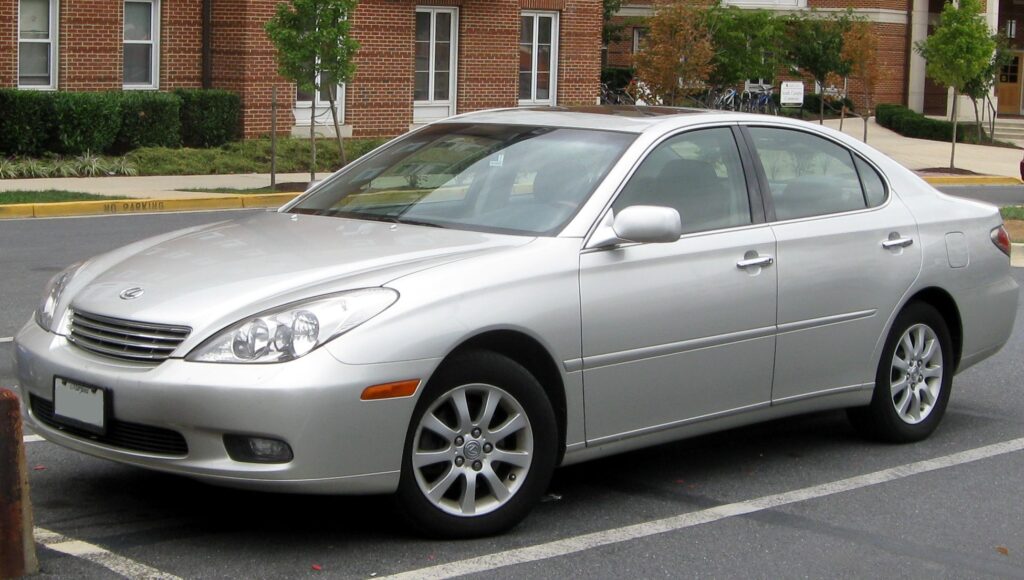
12. **Lexus ES300: The Camry in a Tuxedo That Fooled Everyone**The Lexus ES, specifically the ES300 generations, represents a masterclass in automotive perception, truly embodying the idea of a “Camry in a Tuxedo That Fooled Everyone.” For years, the ES was Lexus’s sole front-wheel-drive sedan, brilliantly leveraging the reliable and popular Toyota Camry platform. Through clever engineering and strategic enhancements, it was transformed into a vehicle that instantly conveyed an impression of joining the exclusive ‘country club’ set.
This was Toyota’s stroke of genius in badge engineering: taking the robust and dependable Camry, layering on luxurious leather, integrating a smooth V6 engine, and presenting it as a full-fledged “luxury” car that few questioned. The performance figures were respectable for its class, with a “3.0-liter V6” offering “188-210 hp” and 0-60 mph in “around 8.5 seconds.” Its starting price of “$28,000-32,000 new” was significantly lower than the “$40,000+” of its German competitors, yet it offered superior interior space and, crucially, legendary “Toyota-grade” reliability.
The true brilliance of the ES300 lay in its ability to deliver an authentic luxury feel without the notorious maintenance woes often associated with European brands. Owners enjoyed “real wood trim,” durable leather seats that “didn’t crack after one summer,” and a ride quality so refined it convinced passengers they were in a much more expensive vehicle. The third-generation (1997-2001) was particularly adept at this, with styling that gracefully aged and an interior that exuded quiet executive sophistication rather than shouting its economy car roots.
While automotive enthusiasts might have been privy to its Camry underpinnings, the general public, and more importantly, one’s wallet during maintenance, remained blissfully unaware. While BMW owners often found themselves explaining to mechanics why a simple cup holder replacement could cost “$400,” ES300 owners were quietly enjoying a premium driving experience, reliably reaching their destinations without unexpected financial setbacks. It was a testament to smart luxury, allowing owners to enjoy peace of mind alongside prestige.
Was it as dynamically sporty as a BMW 3 Series? Definitely not. However, the ES300 offered an unparalleled blend of reliability, comfort, and perceived luxury, delivering “90% of the luxury experience for 60% of the price.” It was, and remains, a brilliant example of how being financially savvy can genuinely trump being overtly flashy, proving that smart choices can offer a deep and lasting sense of affluence.
***
**Driving Forward with Financial Acumen**
Ultimately, our exploration of these 12 compelling vehicles reveals a profound truth about wealth, aspiration, and the cars we choose to drive: the journey to financial independence and the authentic projection of success are frequently more about shrewd, informed decisions than about fleeting, ostentatious displays. Whether an individual opts to embrace the discreet reliability favored by actual millionaires, or cleverly leverages the ‘perceived luxury’ of a thoughtfully chosen model that punches above its weight class, smart automotive choices carry significant weight. These decisions can directly impact not only one’s path to wealth accumulation but also how one is perceived in the world.
This article serves as a powerful reminder that true affluence often whispers its presence, rather than shouting it from behind the wheel of an overly expensive, rapidly depreciating asset. By prioritizing genuine value, understanding the long-term costs of ownership, and skillfully sidestepping the societal pressure to ‘flex’ with flashy new models, individuals can build substantial, lasting wealth. More than just a means of transportation, the right vehicle choice becomes a statement of sophisticated self-awareness and financial wisdom, allowing drivers to navigate the road ahead with both confidence and a quiet, profound sense of accomplishment. It’s about driving smart, not just driving fast or flashy, and in today’s complex financial landscape, that’s a strategy that truly pays dividends.

